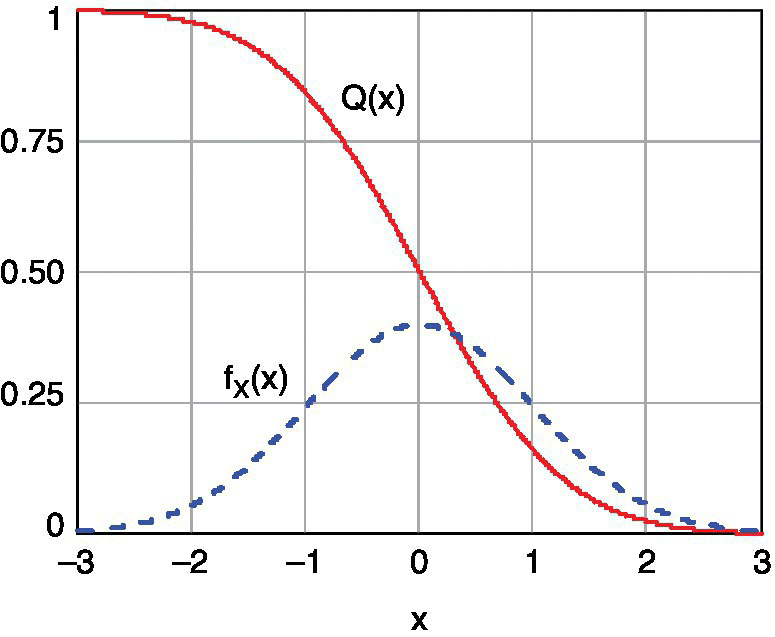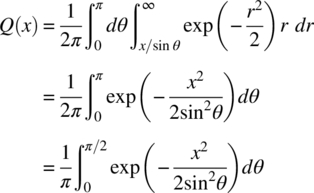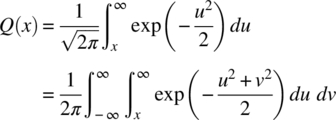Appendix B: Gaussian Q Function
B.1 Gaussian Q‐Function
The Gaussian Q‐function, which is defined by
represents the area under the tail (between x and ∞) of a zero‐mean and unit variance Gaussian pdf fZ(z) (see Figure B.1). Since the area under a pdf is equal to unity, Q(−∞) = 1 and Q(∞) = 0. Owing to the symmetry of the Gaussian pdf with respect to the origin, Q(0) = 1/2 and

Figure B.1 Gaussian Q‐Function and the Gaussian (Normal) Pdf with Zero‐Mean and Unity Variance.
The Craig’s definition of the Q‐function [1] can easily be derived from (B.1) as follows:
If we make a transformation of Cartesian coordinates to polar coordinates as ![]() and inserting
and inserting ![]() into (B.3) (see Figure B.2), one gets
into (B.3) (see Figure B.2), one gets

Figure B.2 Coordinate Transformation For Deriving the Craig’s Formula For ...
Get Digital Communications now with the O’Reilly learning platform.
O’Reilly members experience books, live events, courses curated by job role, and more from O’Reilly and nearly 200 top publishers.


